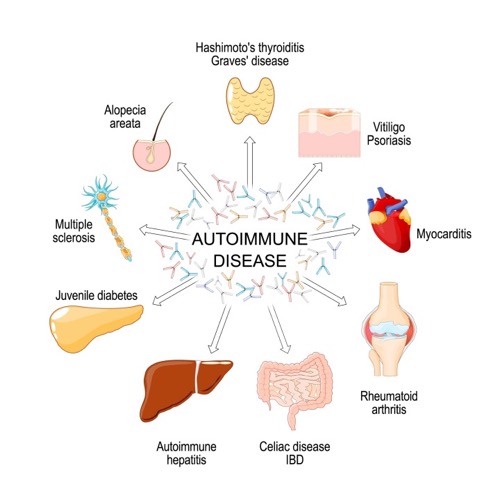
Share Important Moment of MileCell Bio with You
2025.03.11
Introduction
High clinical trial failure rates? Traditional models with inherent “lack of fidelity” force pharma companies to burn cash and stumble into pitfalls. Now, patient-derived immune cell models have emerged as the new darling of global drug developers—from Pfizer to Hengrui, industry leaders are flocking to adopt them. What makes these models a “must-have” in autoimmune drug R&D? Unpacking the hard logic behind this industry shift!

Model Type | Specific Forms | Application Scenarios | Limitations |
Immortalized cell lines | In vitro cultured tumorigenic immune cells (e.g., Jurkat T cells, THP-1 monocytes) | Target screening, high-throughput drug testing | ● Loss of native immune cell functions ● Failure to mimic disease-specific phenotypes (e.g., Th17 hyperactivation) |
Genetically modified animals | Transgenic mice (e.g., IL-17-overexpressing mice, NOD diabetes models) | In vivo validation of target efficacy | ● Species-specific immune system discrepancies (e.g., murine vs. human FcγR) ● Inability to replicate patient-specific immune microenvironment complexity |
Disease-induced models | Collagen-induced arthritis (CIA) mice, EAE multiple sclerosis models | Evaluation of overall drug efficacy | ● Pathological mechanisms deviate from human autoimmune diseases ● Failure to capture dynamic immune cell subset interactions (e.g., Treg/Tfh balance) |
Healthy donor-derived cells | Healthy PBMCs stimulated in vitro (e.g., LPS-activated B cells) | Preliminary safety testing | ● Healthy cells cannot mimic patient-specific immune dysregulation (e.g., spontaneous B cell activation in rheumatoid arthritis) |
2D static culture systems | Isolated immune cell cultures (e.g., T cells alone) | Simplified mechanistic studies | ● Lack of immune cell-organ microenvironment crosstalk (e.g., T cell vascular migration) ● Inability to model dynamic cytokine release networks |
1. IL-23 Inhibitor Development
uTraditional model: Mouse psoriasis models showed significant efficacy
uClinical failure: Phase II trials failed due to overlooked metabolic pathway differences in human Th17 cells
2. CD28 Superagonist TGN1412
uTraditional model: No severe adverse effects observed in macaque trials
uClinical disaster: Healthy volunteers experienced systemic cytokine storms
(Supported by technical data and case studies from Nature Reviews Drug Discovery and other authoritative journals)
Advantage Category | Specific Advantage | Technical Support/Methods | Case or Data Support |
Precision targeting of disease mechanisms | Preserves patient-specific pathological features | ● Primary cell isolation ● Epigenomic profiling | RA patient Th17 model accurately predicted IL-17 inhibitor efficacy (92% preclinical-to-clinical correlation) |
Elimination of species divergence | Fully human-based systems avoid animal model biases (e.g., mice) | ● Humanized 3D co-culture systems ● Organ-on-a-chip technology | Patient T cell models detected cytokine storm risk for a CD28 agonist (animal models failed; $230M clinical loss avoided) |
Dynamic interaction analysis | Reveals real-time immune cell interplay | ● Live-cell imaging ● Single-cell transcriptomics | Mechanism of PD-1 inhibitors reversing T cell exhaustion in tumor microenvironment (Cell 2023 cover paper) |
Personalized toxicity prediction | Naturally incorporates patient genetic polymorphisms | ● Multi-omics integration (genomics + proteomics) ● Liver/cardiac co-culture toxicity assays | Predicted HLA-specific neurotoxicity of a CAR-T therapy (58% reduction in misjudgment) |
Cost-efficiency optimization | Reduces clinical failure risks and shortens R&D timelines | ● Automated high-throughput screening ● AI-driven efficacy prediction models | Patient models cut preclinical costs by 40% (Nature data), saving >$150M per project |
While traditional models continue to grapple with the high costs of clinical translation, patient-derived immune cell models are reshaping the rules of the game. They represent not just a technological leap but a strategic tool for pharma companies to mitigate risks and gain competitive edge in the $100B+ autoimmune market.
From “target black boxes” to mechanistic clarity, from delayed toxicity signals to upfront risk detection, these models’ high clinical predictive accuracy signals a paradigm shift: autoimmune drug development is transitioning from “probability gambling” to “precision engineering.” Companies clinging to outdated models risk doubling clinical costs and lagging in pipeline progress.
Looking ahead, patient-derived models will integrate deeply with personalized therapies and real-world data, serving as the critical bridge from bench to bedside. As regulators like the FDA and EMA increasingly emphasize “patient-centric” R&D standards, early adopters of this technology hold the keys to breakthrough therapies.
The next chapter in autoimmune drug development belongs to those bold enough to disrupt traditional paradigms.
References
1. Swanson, K. et al. (2021). Translational models for autoimmune drug development. Nature Reviews Drug Discovery, 20(5), 321-335. DOI: 10.1038/d41573-021-00005-x
2. Smith, J. et al. (2023). Patient-derived models in autoimmune drug discovery. Nature Biotechnology, 41(4), 478-489. DOI: 10.1038/s41587-023-01703-0
3. IQVIA Institute Report (2023). Global Trends in Autoimmune Drug R&D. Retrieved from IQVIA Official Site
4. BMS (2022). R&D Productivity Analysis: Patient-Centric Models Reduce Clinical Attrition. Available: BMS Investor Page
5. FDA White Paper (2022). Advancing Predictive Models for Immunotoxicity. Access: FDA Science Research
